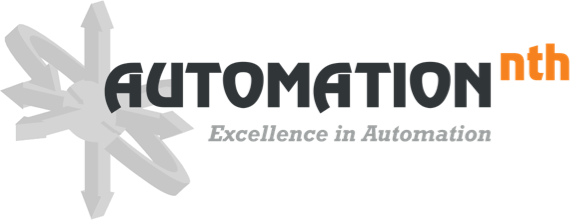As the requirements for robust industrial automation becomes more demanding, relying on traditional automation technology becomes less sufficient. The future of manufacturing lies in smart manufacturing automation, and NTH is at the forefront of this revolution. The industry’s accepted tools are quickly being outdated as the products assembled become more technologically advanced. No engineering team is as ready to construct such involved and rigorous systems for the next level of products as NTH Engineers. When tackling products that require such substantial levels of accuracy and intricacy, NTH Engineers are the first to find and employ the latest and greatest technology needed, from highly customized robotics for production efficiency, such as robotic EOAT, to cutting-edge conveyance systems to multi-tasked cameras, we offer intelligent manufacturing solutions.
The Epoxy Problem: A Case Study in Smart Manufacturing Automation
When designing the system for assembling certain products, the solution for success does not always easily present itself. Such was the case with an epoxy filled Printed Circuit Board (PCB). This product required a layer of conductive epoxy that encased the bottom of the PCB, with an area less than 30 mm, but left two elevated pads, with areas less than 2 mm, free of the conductive epoxy. After the conductive layer of epoxy was dispensed, a layer of protective epoxy was dispensed to cover the conductive epoxy. The bottom of the PCB would have been severely damaged if the secondary epoxy touched it, so it was crucial that the conductive layer perfectly covered the bottom with as little epoxy as possible. Any portion of the PCB left exposed after the conductive epoxy dispensation was expected to be faulted by the machine vision check station.
The NTH Engineering Team started with a traditional black and white 2D monochrome camera for the machine vision check station. The camera was programmed to scan the XY coordinate plane of the PCB for the exposed bottom. It was quickly discovered that the greyscale 2D camera had difficulty parsing the difference from the bottom of the board and the epoxy covering as well as random hotspots on the pad. This highlights the limitations of 2D vision in complex manufacturing process optimization. With the camera failing to fault the PCBs with exposed bottoms, the secondary epoxy was piped in and corroded the exposed board. One such failure is shown in Figure 1, where the hotpots on top of the pads registered.
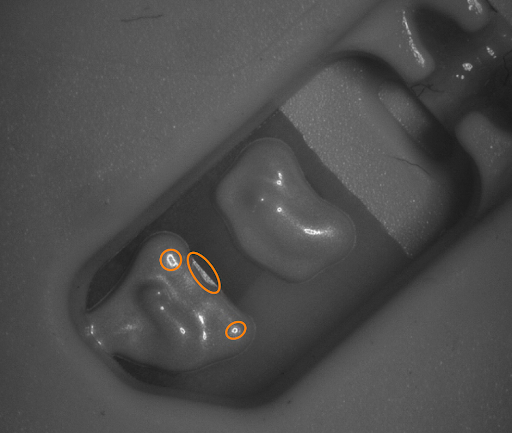
The NTH Engineering Team then moved to the colored variation of the Monochrome Camera. The camera could scan for the color of the PCB bottom by registering each pixel to an RGB value, faulting any scanned PCB with a pixel of the registered color; unfortunately, it also would register highlights or reflection anomalies, logging false positives and faulting PCBs that should have passed. To combat these problems, the team adjusted the working distance as well as adding a polarized lensing. The number of errors dropped significantly but the application required an error-free solution.
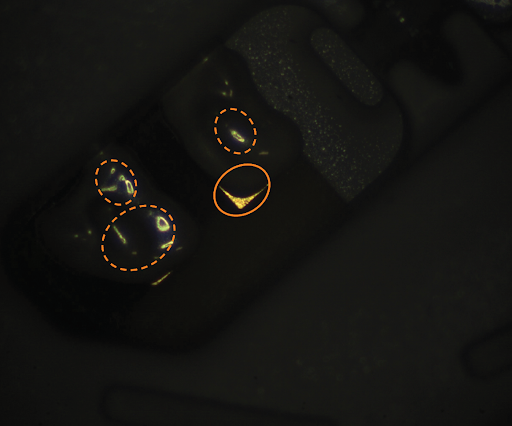
the true bottom of the PCB indicated with the solid circle
The solution required technology beyond the industry standards of machine vision. The NTH Team decided that the move forward was to scan not just the XY plane but also the Z plane as well as color. This decision exemplifies NTH’s commitment to smart manufacturing automation. When Keyence released its 3D Keyence XT-024 Camera, NTH engineers were among the first ones to employ it in their systems. The engineers tested a setup where the 3D camera would detect color as well as z height differentiations, shown in Figure 3. This two-prong attack, utilizing precision automation in manufacturing, meant that the camera would first scan for the specified color on the XY plane, catching any faults if the bottom was exposed.

If the specified color was detected on an anomalous location, such as on top of the exposed pads, the camera would then use its 3D scan to measure the height of the detected color. This secondary scan would weed out the false positives, shown in Figure 4. PCBs that needed more of the conductive epoxy would be faulted while those that might have a variant highlight or random flash of color that did not signify needing epoxy would be passed.
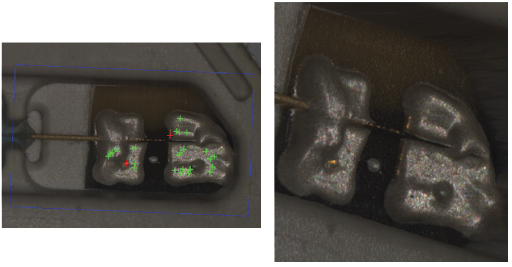
Innovative solutions and a drive for success to the “nth degree” is a hallmark for Automation NTH, exemplified by the responsive use of new technologies like the 3D Keyence Camera.
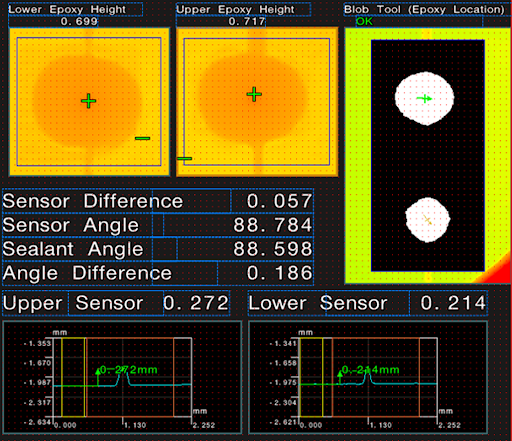
Automation NTH delivers custom manufacturing automation solutions, including turnkey automation equipment and machine vision applications, with a wealth of experience solving the most complex, high-precision projects.
We work with our customers to thoroughly understand their application and then determine the best and most cost-effective automation technology to do the job. The machine vision systems we integrate for our customers improve operational efficiency, increase product quality, and reduce costs in production by minimizing yield loss. Our machine vision integration capabilities include machine tool automation, vision guided robotics, high speed imaging, thermal/IR imaging, 3D imaging, detailed part inspection, and the development of computer vision software tools.
